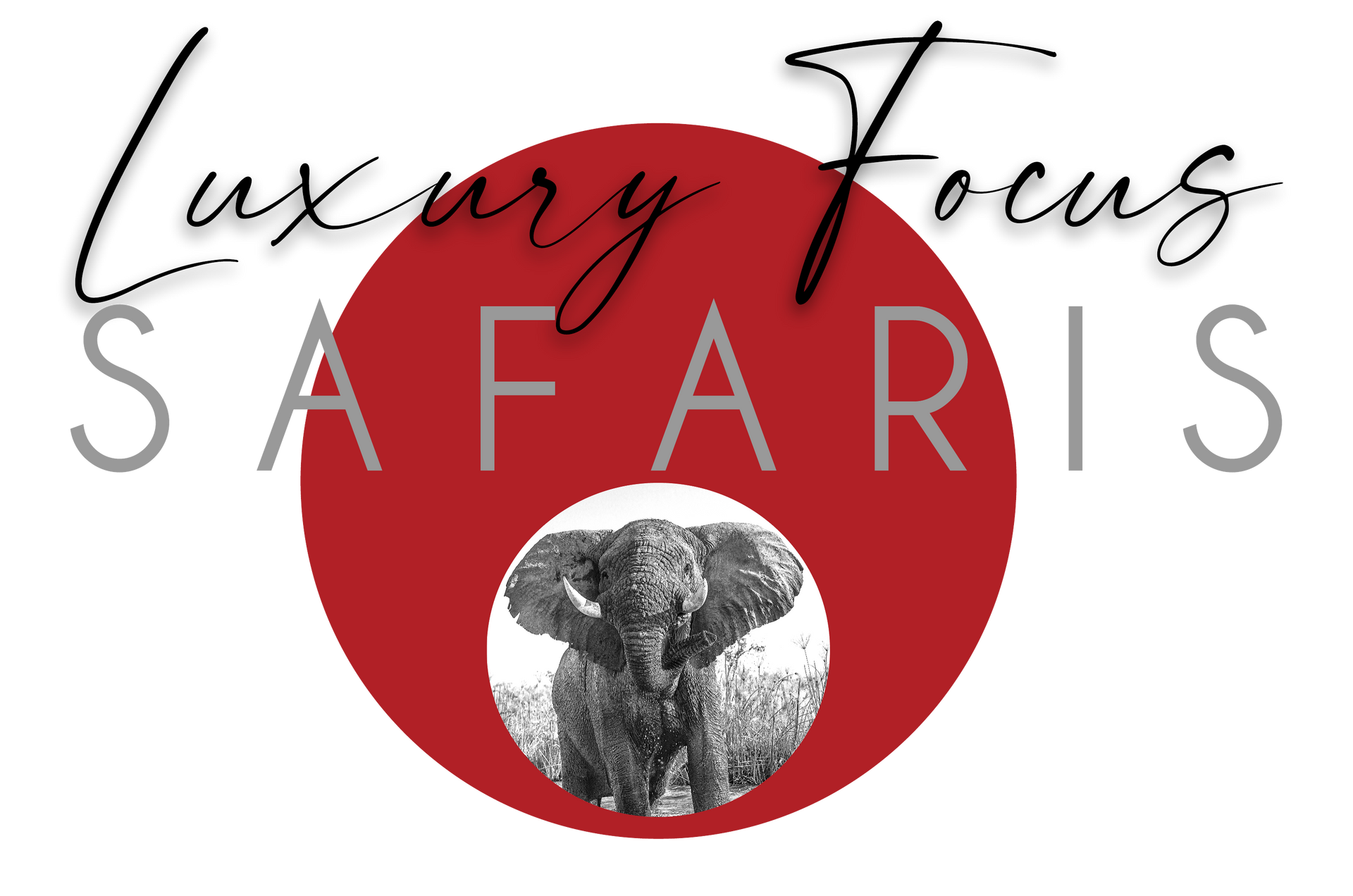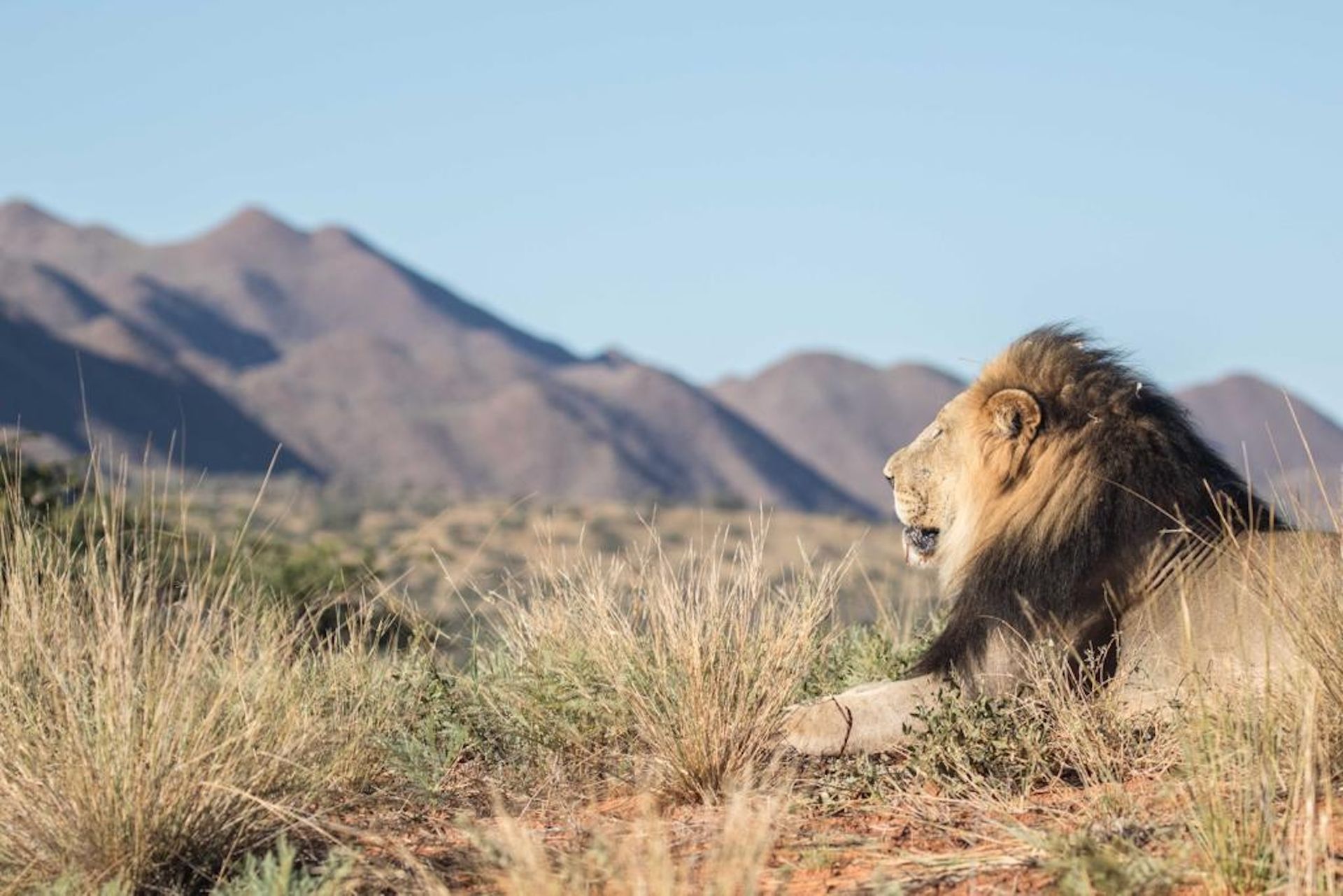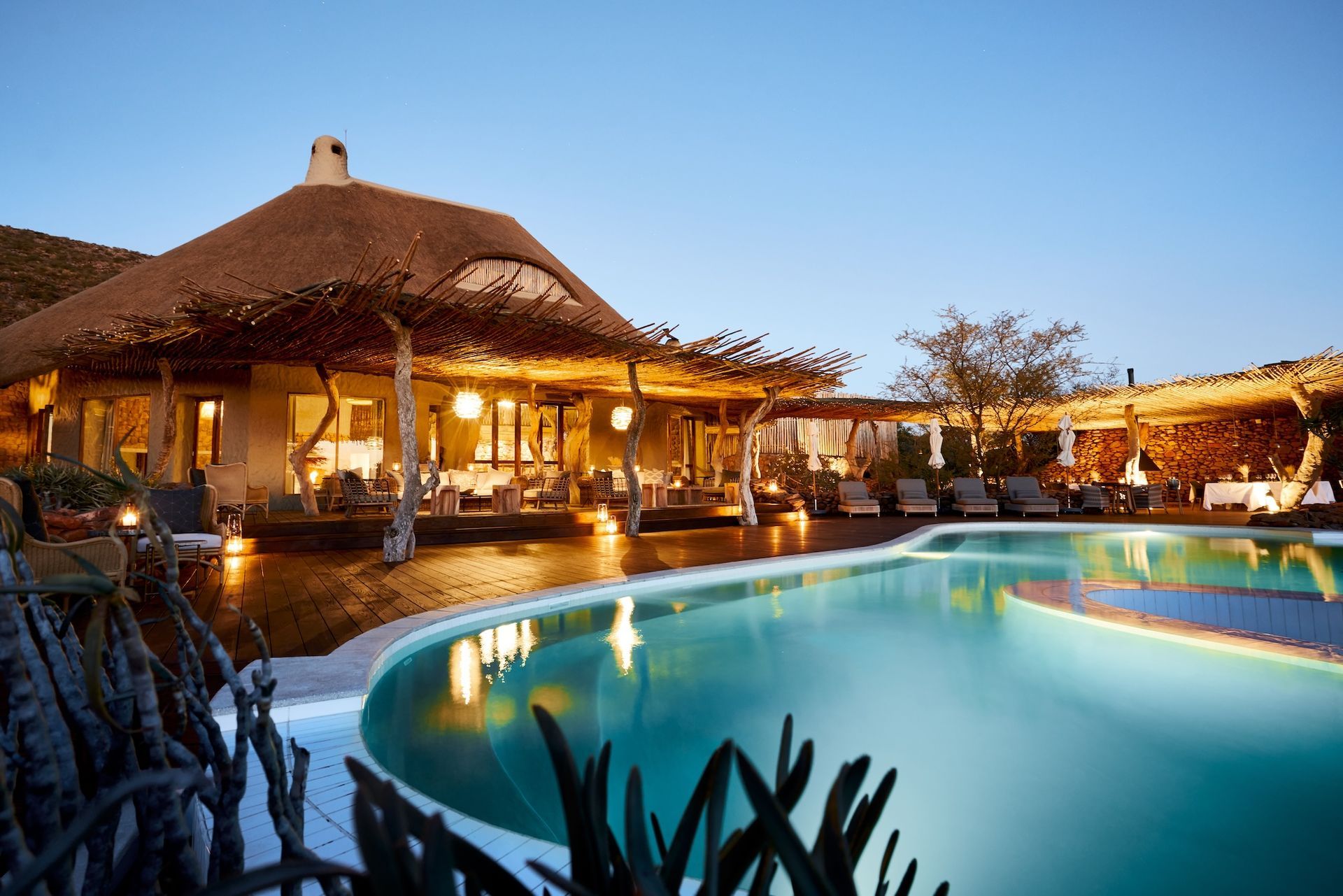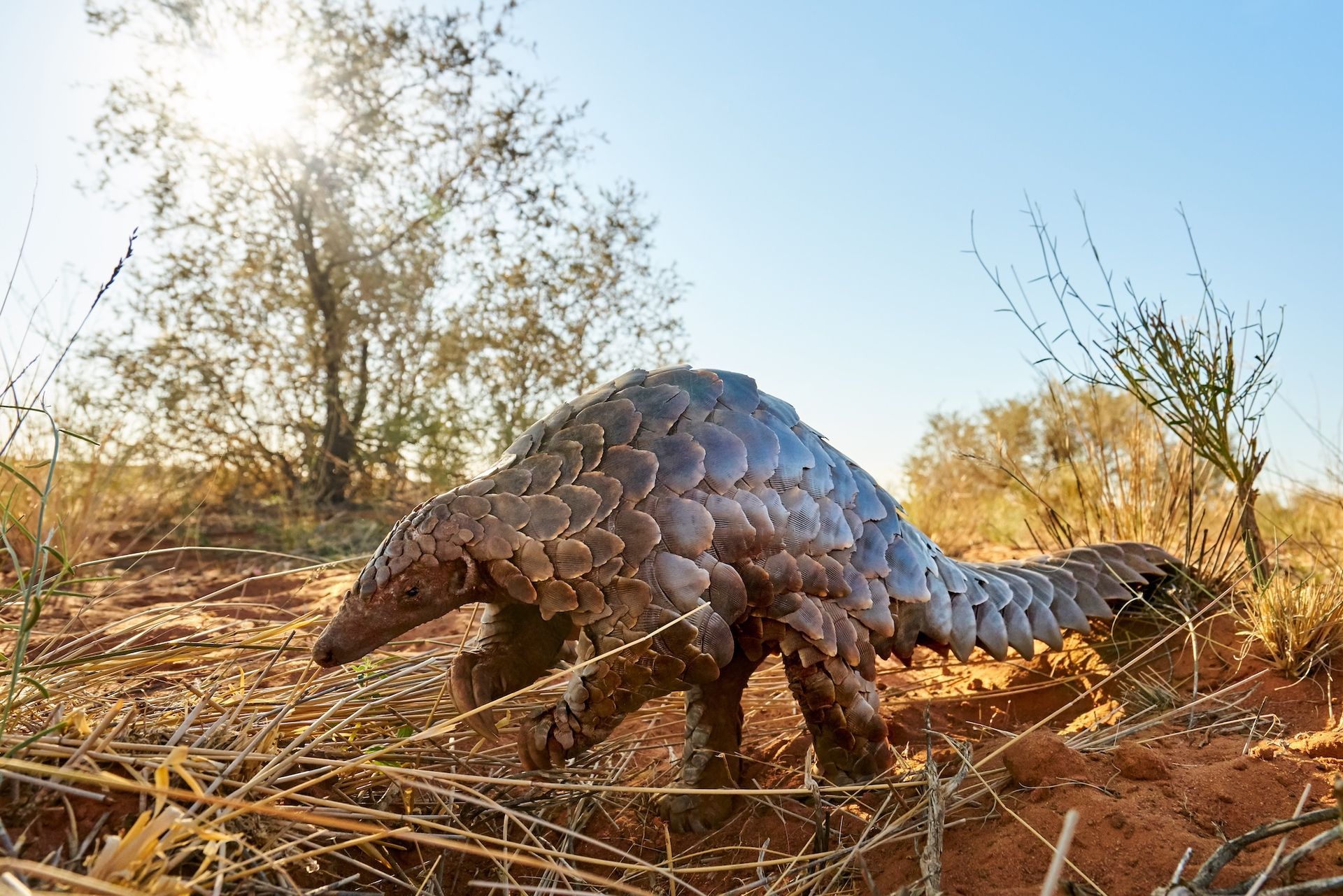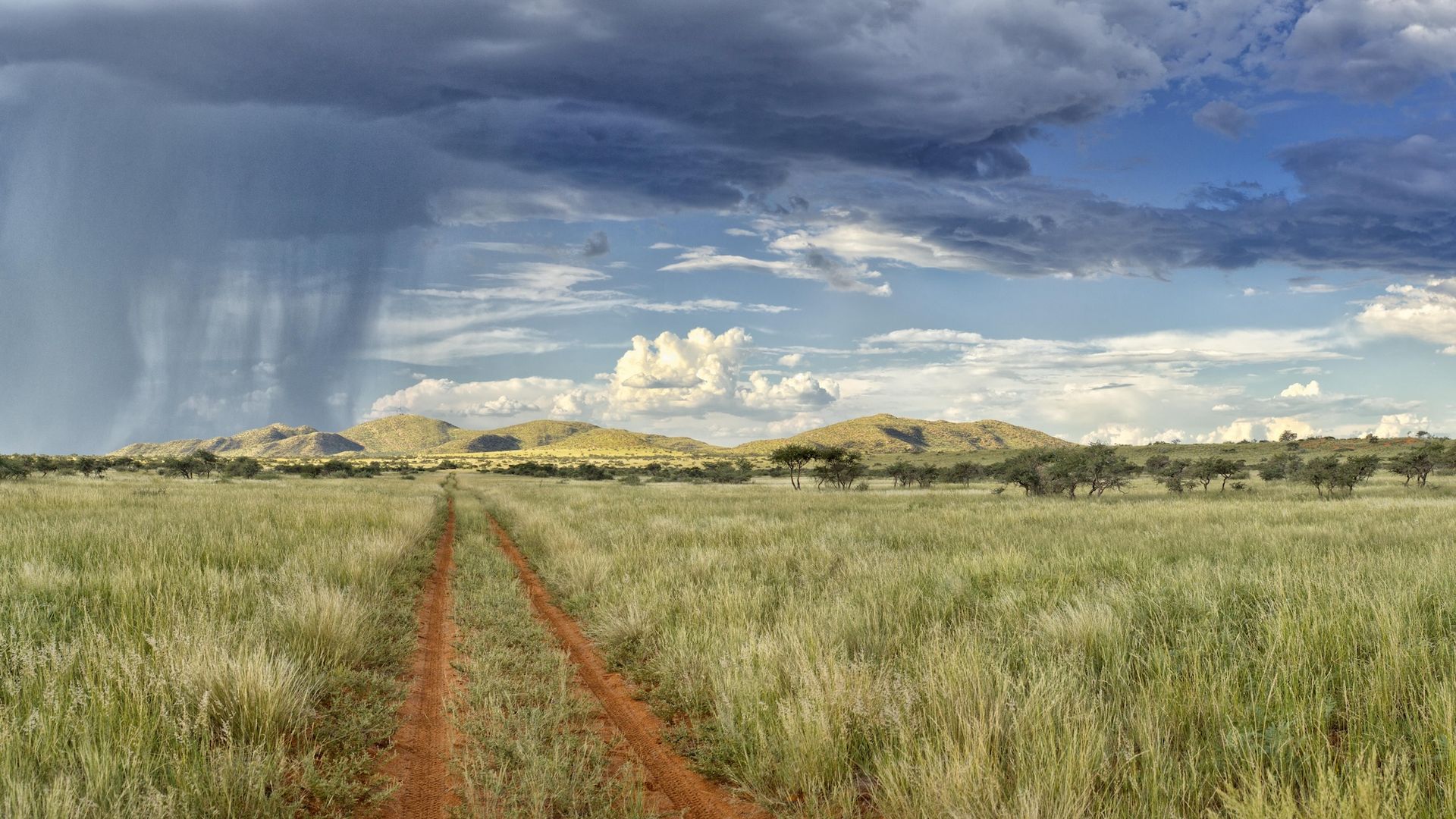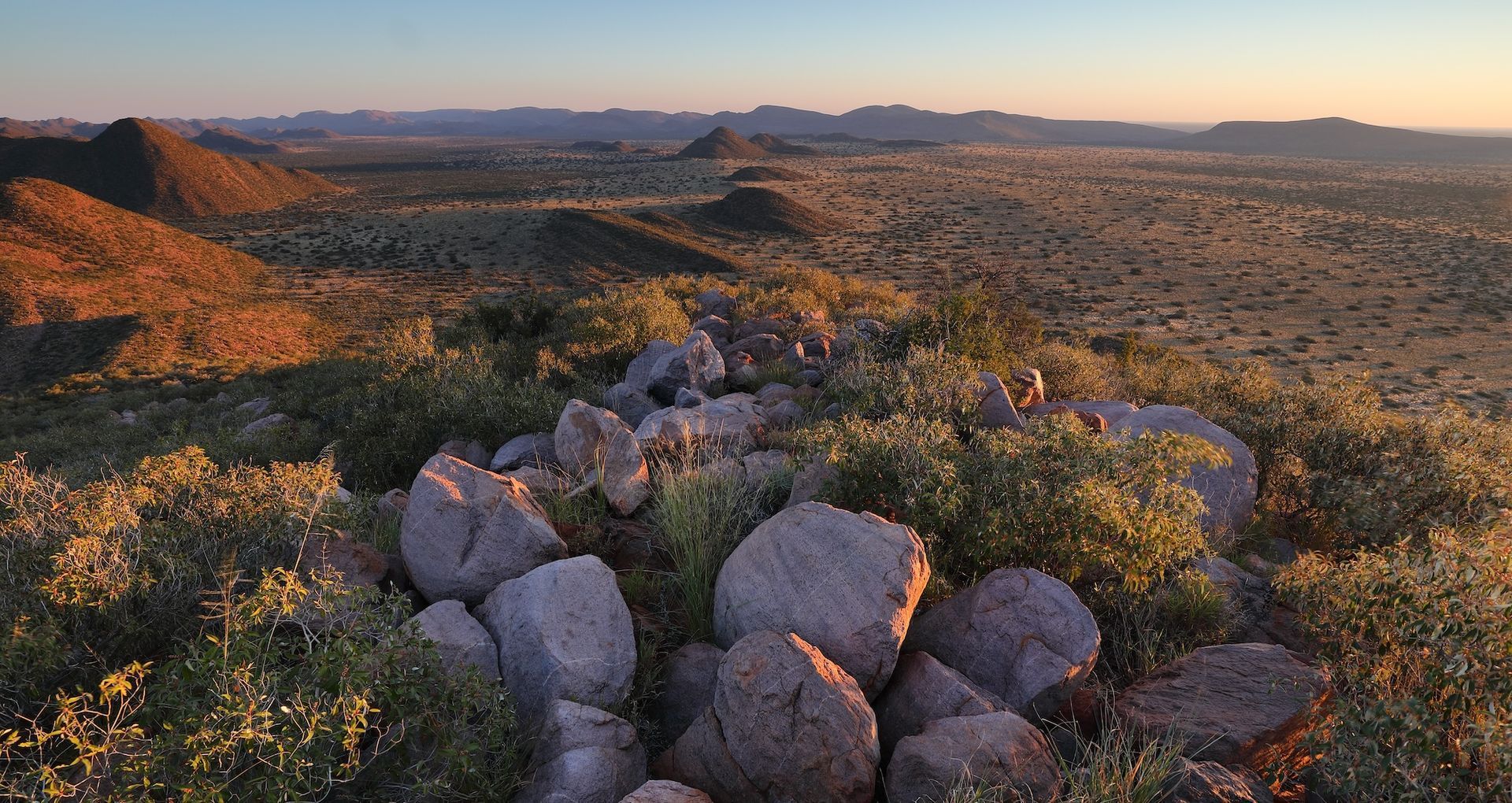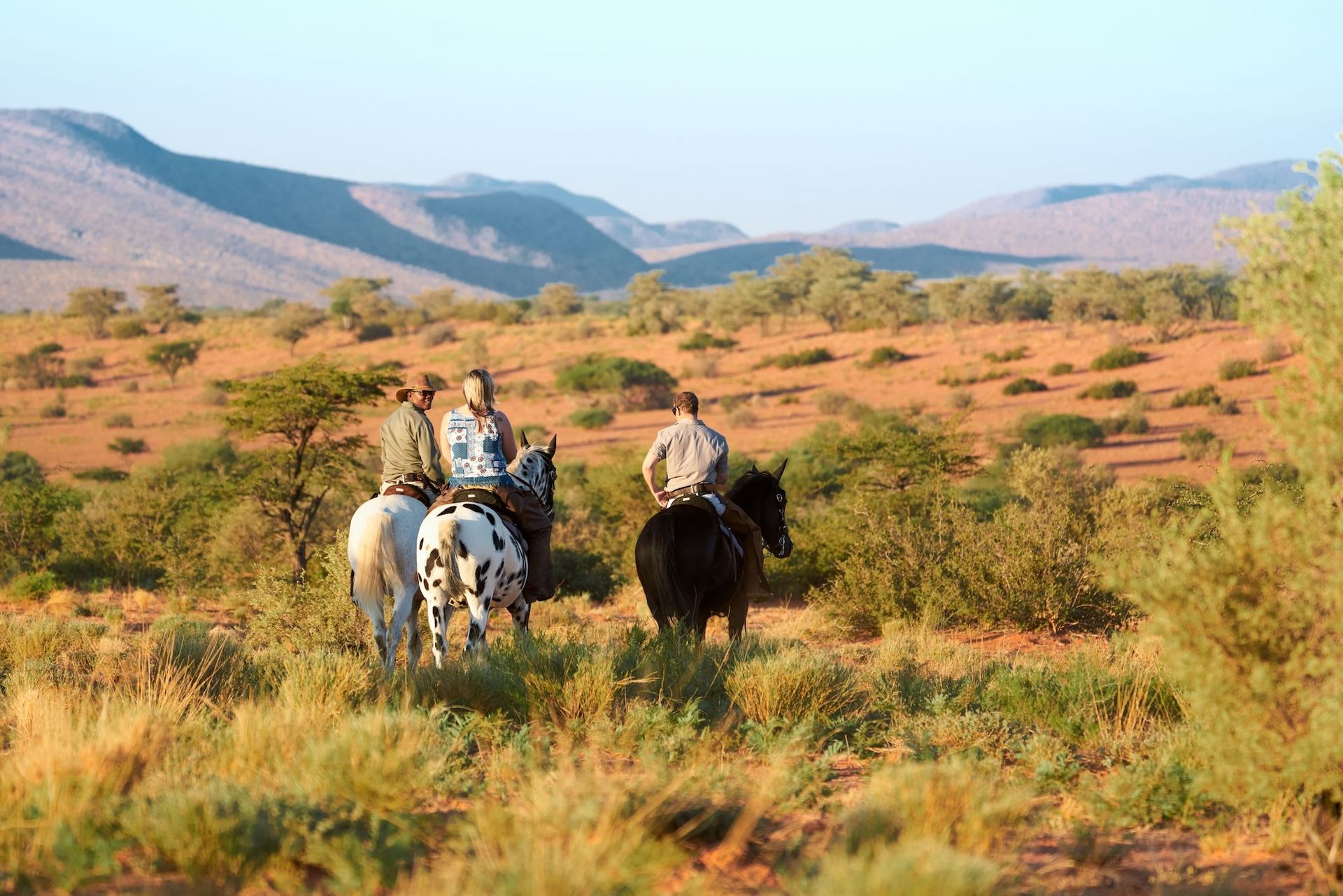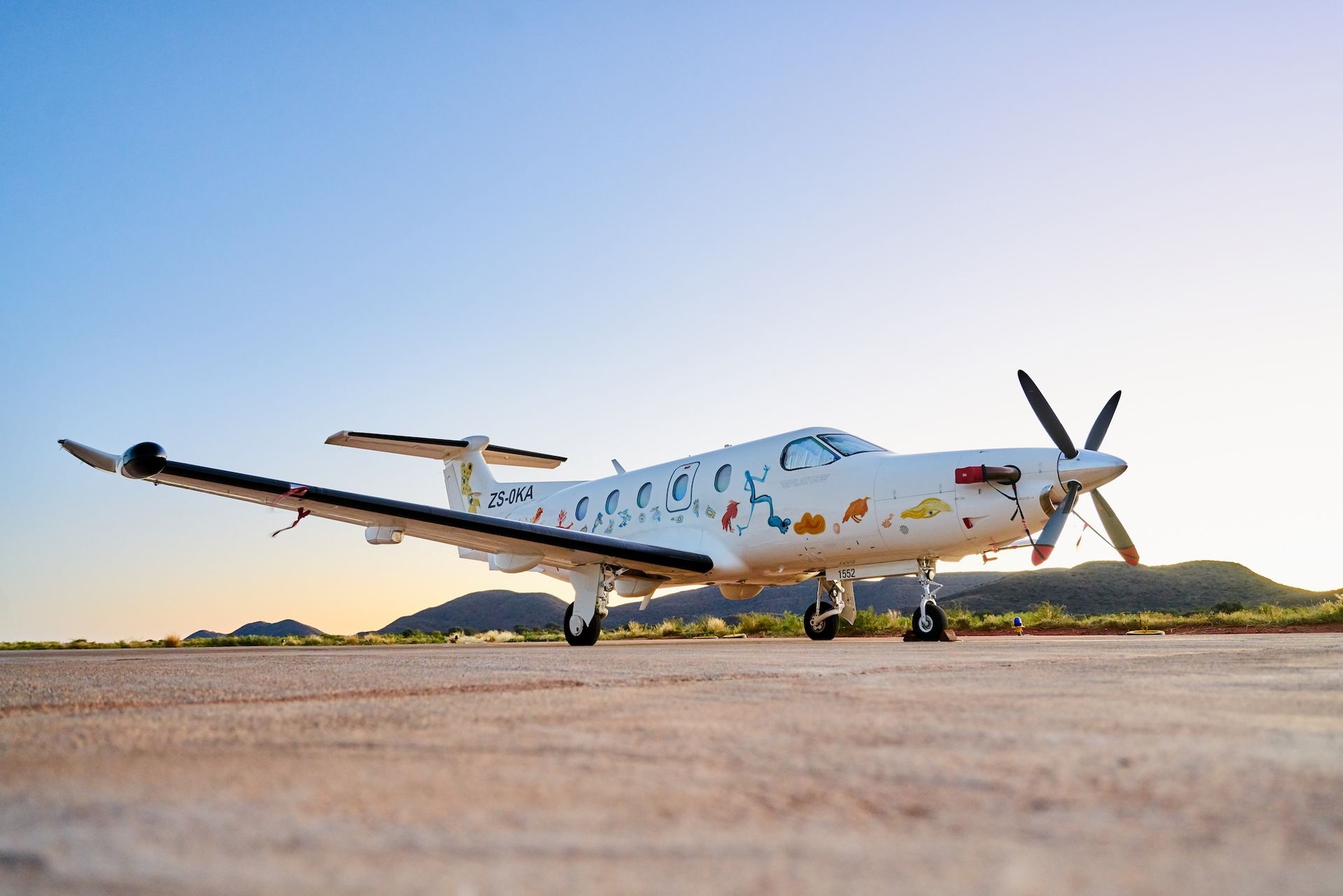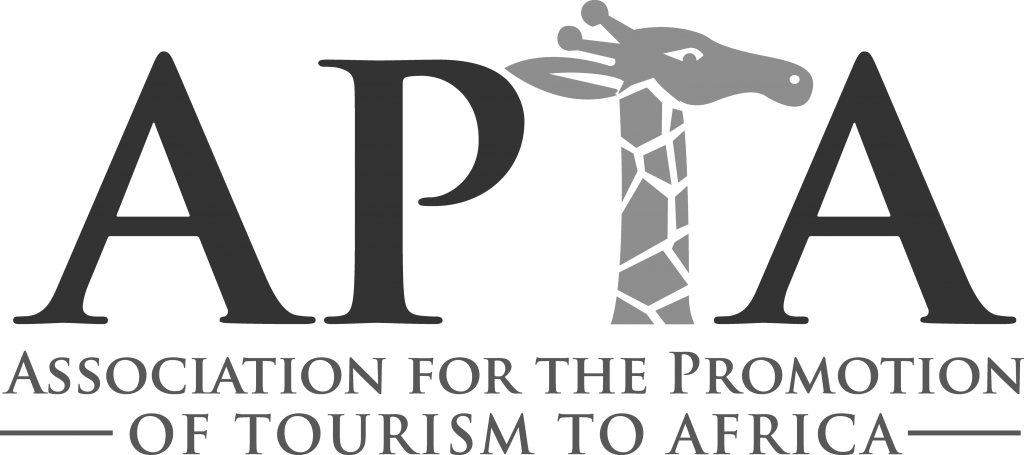An inside look at Tswalu Kalahari
Join us as we explore this South African conservation and safari legend
When you travel across sub-Saharan Africa staying at some of the best safari lodges and camps on the continent, you tend to get the inside edge on amazing places to stay. So, we asked award-winning South African travel writer Sharon Gilbert-Rivett to tell us about one of her favorite places - Tswalu Kalahari in South Africa's breathtaking Northern Cape province - and share with us what she thinks makes it so special. She's had the privilege of spending time there and here shares her thoughts and observations with us, giving you an inside peek at this incredible safari destination...
Tswalu. Its name means "new beginning" in the local Tswana vernacular, so as I fly over the vast, arid hinterland of South Africa's most remote province - the Northern Cape - I wonder what I will find out there in the parched, nondescript patchwork of cattle farms that I can see from the window of the plush Pilatus that's taking me from Johannesburg's OR Tambo International Airport to this legendary place.
There’s something to be said for private planes. Indeed, anything which avoids the hassles of getting to the airport, finding parking, check-in and security queues, buses to and from a past-its-sell-by-date plane which is parked in the farthest possible spot from the main terminal building, waiting for luggage, etc etc, has my vote!
The land below is denuded… exhausted… spent… and I find myself reflecting that farming here must be a supreme act of will and those who attempt it inspire my admiration for their sheer tenacity.
An hour and a half out of the private hangar at Johannesburg's OR Tambo International Airport, the landscape begins to change. Now dotted with the deep grey scars that are the calling card of manganese mines, the quilt of farmland stops abruptly, giving way to the gentle slopes of the Korannaberg before stretching away uninterrupted to the horizon. This is my destination – the 282,000 acres of virtually pristine "green Kalahari" desert that makes up Tswalu Kalahari, the largest private game reserve in South Africa.
It's owned by the Oppenheimer family of Anglo American fame. Nicky and Strilli Oppenheimer were given first rights to the land in the will of its previous owner, Mancunian entrepreneur and hunter Stephen Boler, who died suddenly in 1998. It was Boler who had begun the task of turning what had been a cattle farm into something resembling natural bush, albeit for hunting purposes.
The hunting stopped as soon as the Oppenheimers took possession and so began a long, and often arduous road to fulfil the dream Nicky and Strilli had of restoring the Kalahari to itself. Untold tonnes of manmade structures were removed along with countless waterholes, irrigation systems, alien flora species and kilometres of barbed wire.
The property was extended to include sensitive habitats and grasses were allowed to regrow. Indigenous game was reintroduced, most notably in the form of beautiful black-maned Kalahari lions. And a luxury lodge was opened – The Motse – offering visitors the chance to indulge in an authentic desert safari experience. It was joined by the Oppenheimer’s former private home – Tarkuni – which is offered as a private safari house, and now Loapi Camp - less a tented camp and more a collection of uber-luxurious canvas safari homes.
Some three decades down the road the Oppenheimer’s dream of restoring this part of the southern, or “green” Kalahari has been more than fulfilled. Studying the large relief map in The Motse's lounge, I muse on the vast expanse surrounding me. Arid mountain bushveld which makes up part of the Korannaberg in the east of the property gives way westwards to gently rolling dunes and vast open pans in the south-west.
To the north-east lies the appropriately named Hotazel, and to the north-west Van Zylsrus. Tswalu is around 186 miles north-west of Kimberley and 167km north-east of Upington. Botswana is around 43 miles to the west and the Kgalagadi Transfrontier Park is within easy driving distance.
The reserve is vast, adding new meaning to the notion of exclusivity. In your private vehicle you get an incredible sense of remoteness as you traverse the dramatic landscapes that range from the magnificent mountains to the gently rolling grass-covered dunes that resemble a sandy sea. Life is everywhere, in spite of the arid nature of the environment. And some of that life is preciously unusual and rare.
Tswalu is the one place in South Africa where you are most likely to see the elusive and endangered ground pangolin - an animal renowned as the holy grail of game viewing. Indeed, when it comes to pangolin spotting, Tswalu is the place to be, especially when temperatures drop and the odd-looking creatures adopt diurnal habits. It's made it a research hot spot for scientists studying this incredible little creature.
There's a lot more than just pangolins on offer at Tswalu. With some 80 mammal species and 240 species of birds – including Namaqua sandgrouse and pygmy falcon - you’re not going to get bored on a Tswalu game drive. The “usual suspects” for the area include gemsbok, sable, tsessebe, roan, aardvark, porcupine and springbok. Add to them giraffe, buffalo, zebra (Burchells and Hartmann’s mountain), eland, cheetah, brown hyena, aardwolf and hartebeest.
And then there’s the meerkats, Tswalu has habituated “mobs” or clans and guests are able to get exceptionally close to them with the help of resident human helpers whose job it is to monitor them and maintain their levels of habituation. It’s a huge drawcard and one which has made Tswalu a popular port of call on safari itineraries.
The area around Tswalu is the ancestral home of the San bushmen and there are some ancient petroglyphs up in the mountains which is why, a few hours later, I find myself on top of the Korannaberg with the most incredible vista laid out before me.
The climb up to the petroglyphs has revealed more about the geology and flora of the region thanks to my guide's encyclopaedic knowledge and the ancient engravings and stone tools which lie seemingly in gay abandon at every turn are testament to the people whose descendants make up a large portion of Tswalu’s complement of more than 140 staff.
It's this team of people that go to the very heart of what Tswalu is all about and its deep and abiding commitment to the people of this place.
In 2008 Jonathan Oppenheimer established the Tswalu Foundation with the aim of developing a platform from which Tswalu’s guests could contribute and involve themselves in both the community and environmental research on the reserve.
The foundation is registered as a non-profit organisation which, as well as funding species, ecological and applied research in the Kalahari eco-systems also provides grants for the development of social and community projects.
Among these is the Tswalu Clinic which came about when Dr Ludwig Focking and his wife Eva visited the reserve and decided to become involved in helping to improve the health of the local community. The clinic has become a vital health and education centre in this remote part of the world and now attracts medical professionals from all over the world who come to share their expertise. The clinic oversees the provision of primary healthcare, handling everything from cuts and scrapes to pre-natal care, blood tests and eye tests and dispensing certain basic medicines.
Looking after Tswalu’s staff and community of families extends to the staff village with its energy and water-efficient homes, pre-school crèche and daycare centre and adult literacy programme. Environmental projects the foundation has spearheaded include research into the brown hyena, namaqua sandgrouse, aardvark and scorpions and now, of course, pangolins.
Where to stay:
The Motse consists of a village of nine luxury “legae” – beautifully appointed thatched suites, three of which are two-bedroomed family units. Each legae has an outside stoep with views over a nearby waterhole and the dunes of the Kalahari beyond, and is climate controlled to ensure absolute comfort no matter what the season. The décor and design is a blend of contemporary and traditional furniture in muted desert tones. Open fireplaces, linen and luxurious en-suite facilities top off the accommodation. The Motse’s communal areas are built on several levels around a swimming pool, with salas and lapas offering respite from the sun. There’s a lovely indoor lounge, bar, dining area and library and a boma where bush braais are regularly served.
Tarkuni sleeps 10 people on an exclusive, bespoke basis and has its own host and chef.
Loapi Camp is tucked away in a secluded valley of the Korannaberg and offers six stand-alone modular-style tented villas offering exceptional luxury and exclusivity. There are four one-bedroom homes and two two-bedroom villas, all with their own safari vehicles, private guides and stunning views.
Irrespective of where you stay, you get your own vehicle, guide and tracker to look after you for the duration of your visit. Activities include morning and evening game drives, walks, horse-riding, the Tswalu Kalahari Spa with its range of therapies and treatments, star-gazing and tours of the staff village and community facilities. There's also the inimitable Klein Jan restaurant.
Tswalu is an eight-hour drive from Johannesburg but scheduled flights are available from both Cape Town and Johannesburg.
Talk to us about including Tswalu Kalahari on your next safari itinerary...
Text: Sharon Gilbert-Rivett

